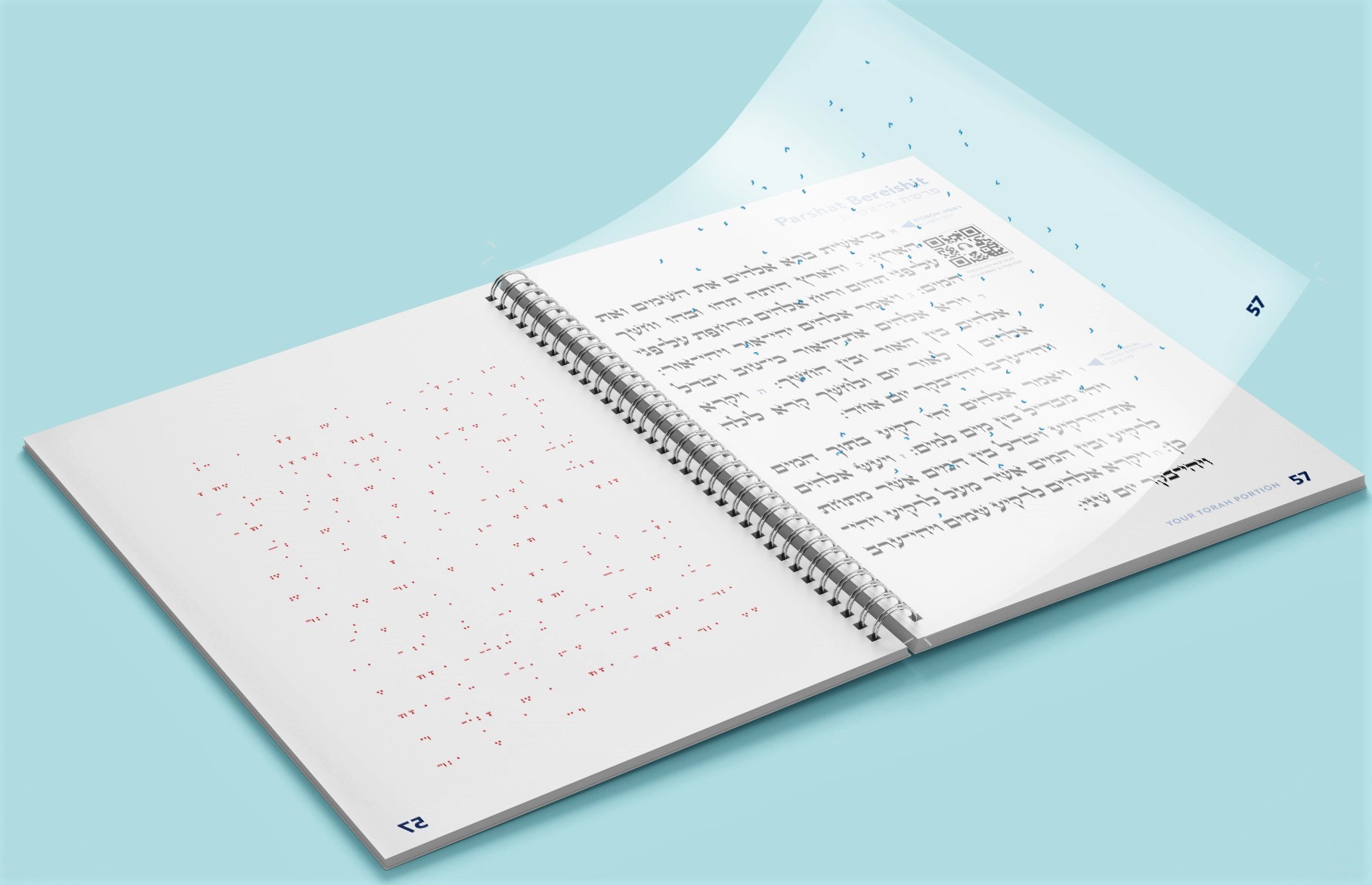
A rabbi has honed a method of teaching Hebrew reading, which
he has now coalesced into a formal training program and book.
When Marina and Vladimir Druskin of Boston began planning for their son Mark’s bar mitzvah, they knew who their ideal Torah teacher would be. The only problem was that their go-to educator, Rabbi Levi Lipinski, had relocated and was no longer available for in-person classes.
“It was upsetting because they had such a good bond. Plus, the rabbi has his own Torah-training program, and so when Rabbi Levi said he can still train him, we decided to try it over Skype,” said Marina Druskin. “Mark loved it. He doesn’t want to study with anyone. He is singing the Torah, and I love it.”
Learning to read the Torah portion online is never easy, even during a pandemic lockdown with not much else for kids to do.
What sets Lipinski—a Chabad rabbi, educator and father of four who lives outside of Philadelphia—apart is his specific method for teaching boys how to read. It’s one that he has honed over years of bar mitzvah training, which he has now coalesced into a formal training program and book.
“In my design, everything is in one column. The cantillations and vowels are on a paper film that sits over the Torah print, and as the child moves forward with their learning, they can remove the layers of film,” said Lipinski, who is originally from Argentina.
Also, while many Jewish schools, be they day school or supplemental school, teach Hebrew reading, educators must also balance other subjects, including Jewish holidays, mitzvahs and more, in their limited school hours and may not have time to give students individual attention to help them perfect their Hebrew reading ability. That leaves some youngsters with limited proficiency, and as they approach their bar mitzvah service, they simply memorize the portion without mastering kriyah, or Hebrew reading.

‘More communication and support’
Lipinski said his goal is to give his students the tools they need so that they feel confident whenever they choose to read from the Torah scroll, even if the next time they read is many years post-bar mitzvah.
Since the coronavirus started to spread worldwide, in addition to teaching kids who live in his area via Zoom, Lipinski is also teaching Torah reading to students in New York, Israel and elsewhere.
“There are challenges to stay-at-home Torah training,” he acknowledged. “Some kids don’t have a quiet place where they can learn, some are suffering from a lack of social life, and over the computer it’s hard to see how students are feeling. It requires me to think ahead, and offer more communication and support. My goal is to make it as enjoyable as possible, so that they are capable and successful.”
Though their son Ari’s bar mitzvah took place before the pandemic started, Michi and Skip Pasternak were glad their rabbi referred them to Lipinski and his Torah-training method.
“The first day, I felt Ari couldn’t sit still for a lesson, but Lipinski is very good with kids. He knows what he is doing,” said Michi Pasternak. Noting that her son is very musical, Pasternak said sometimes the rabbi would teach him the reading using the piano as a complementary tool. “There was a lot of understanding in that; he has a way of teaching that kids just get.”
As for continuing to read Torah after his bar mitzvah back in December, Pasternak said her son continues to do so during prayer services at his Jewish high school.
And for Ari, who is entering eighth grade, the classes proved a real learning experience. The rabbi, he said, “would always answer my question. Even though I didn’t want to hear the whole answer, he’d answer the whole thing.”
(JNS).